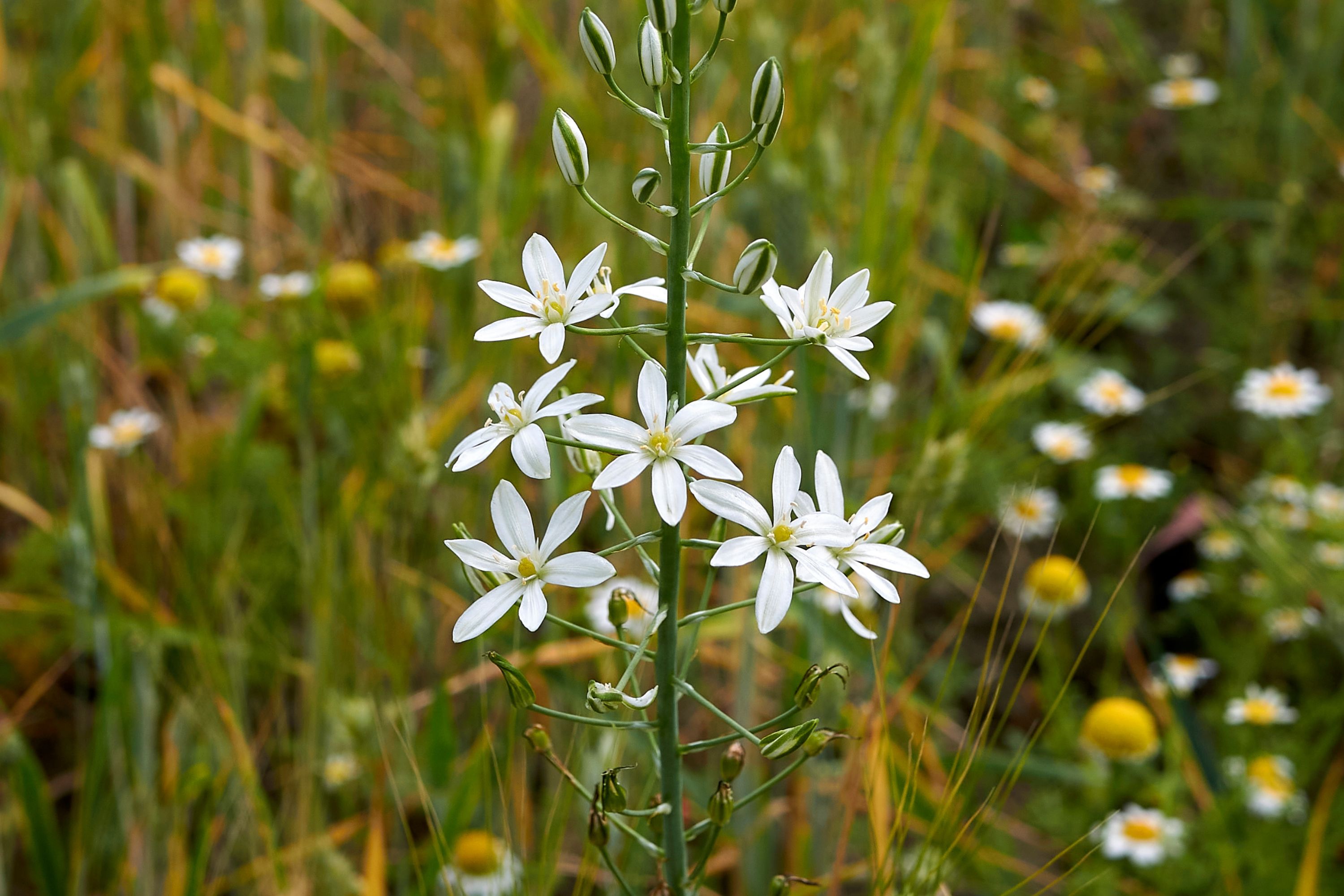Narbonne star-of-Bethlehem
(Ornithogalum narbonense)

Description
Ornithogalum narbonense, common names Narbonne star-of-Bethlehem, pyramidal star-of-Bethlehem and southern star-of-Bethlehem, is a herbaceous perennial flowering plant with underground bulbs, belonging to the genus Ornithogalum of the family Asparagaceae. The Latin name Ornithogalum of the genus, meaning "bird's milk", derives from the Greek, while the species name narbonense refers to the French town of Narbonne. Ornithogalum narbonense reaches on average 40–50 centimetres (16–20 in) of height, with a maximum of 70 centimetres (28 in). The bulbs are whitish and ovoid. The stems are erect and the long leaves are fleshy and lance-shaped, 8–15 millimetres (0.31–0.59 in) wide. The raceme is pyramidal, with 25-75 hermaphrodite flowers. Each flower has a long bract of 1–2 centimetres (0.39–0.79 in) and six star-shaped milky white petals bearing a pale green central vein, while the buds are oval, with longitudinal green and white stripes. The six stamens have a white filament holding yellow anthers of 4 millimetres (0.16 in). The flowers are pollinated by insects. The flowering period extends from May through June. This species is present in the Mediterranean Basin, Armenia and northwestern Iran. This plant grows in fields and grassy and dry areas, in waste ground and in rocky terrains. In the south-east of its range it can be found at an altitude of 0–3,000 metres (0–9,843 ft) above sea level; in Crete at 0–1,150 metres (0–3,773 ft). Ornithogalum species are perennial bulbous geophytes with basal leaves. Sensu lato, the genus has the characteristics of the tribe Ornithogaleae as a whole, since the tribe is monotypic in that sense. Sensu stricto, the genus is characterised by long linear to oblong-lanceolate (lance-shaped) leaves, sometimes with a white longitudinal band on the adaxial (upper) side, an inflorescence that is corymbose or pseudocorymbose, tepals that are white with a longitudinal green band only visible on the abaxial (lower) side, a capsule that is obovate or oblong, and truncate with six noticeable ribs in section and seeds that are globose with a prominently reticulate (net-like pattern) testa. The bulbs are ovoid with free or concrescent scales. The longitudinal band on the leaves is thought to be caused by an interruption of palisade tissue in the central portion of the leaf. This is an apomorphy that was not present in the early lineage of this clade, but is also seen in some Albuca species.
Taxonomic tree:







